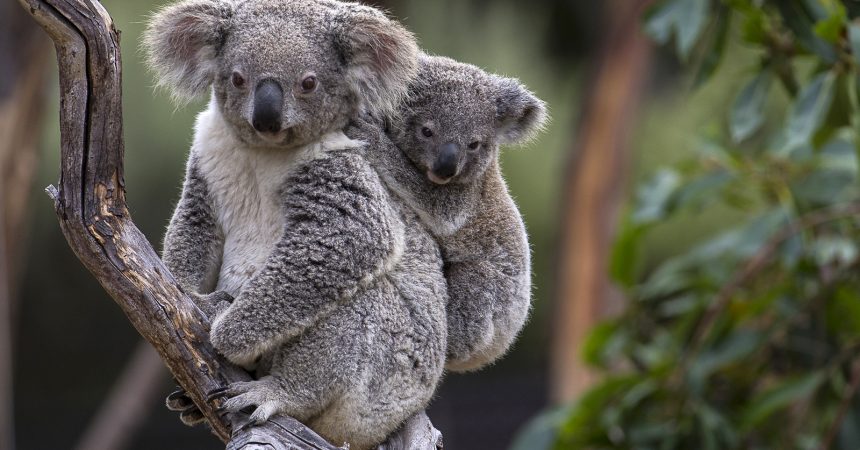What do you know about koalas? These natives of southeastern and eastern Australia have long been a “must see” for visitors to the San Diego Zoo. But along with being undeniably adorable, these remarkable mammals are unique in the Animal Kingdom, in many ways. Here are seven important things to know about koalas.
Not fuzzy—and not a bear
Measuring just 2 to 3 feet tall and weighing 9 to 29 pounds, depending on the species, a koala may look like a cuddly teddy—but it is definitely not a bear. Koalas are marsupials. And while their fur looks soft, it is actually as coarse as a sheep’s wool.
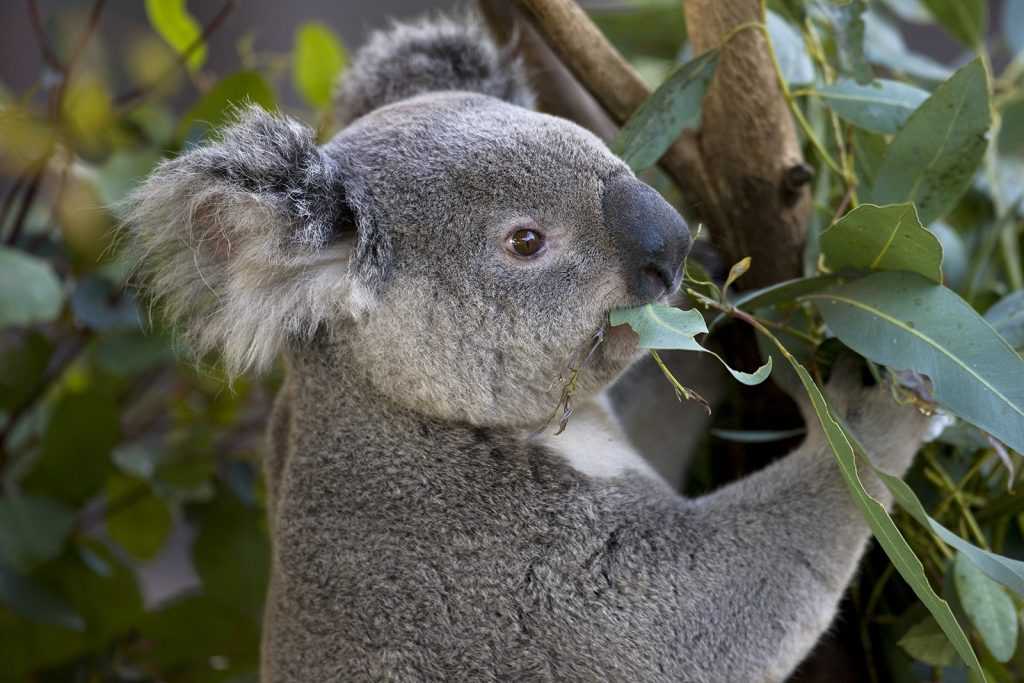
Make like a koala, and eat tree leaves
Koalas’ favorite food is eucalyptus tree leaves, but these aromatic leaves have toxic compounds in them that most animals can’t digest—and different varieties have different levels of toxin. Fortunately, a special bacteria in a koala’s digestive tract can break down these toxins.
Koalas have a backup plan
While a kangaroo’s pouch opens upward, with the opening toward its head, koala pouches open backward, toward their back legs—like burrowing marsupials such as wombats.
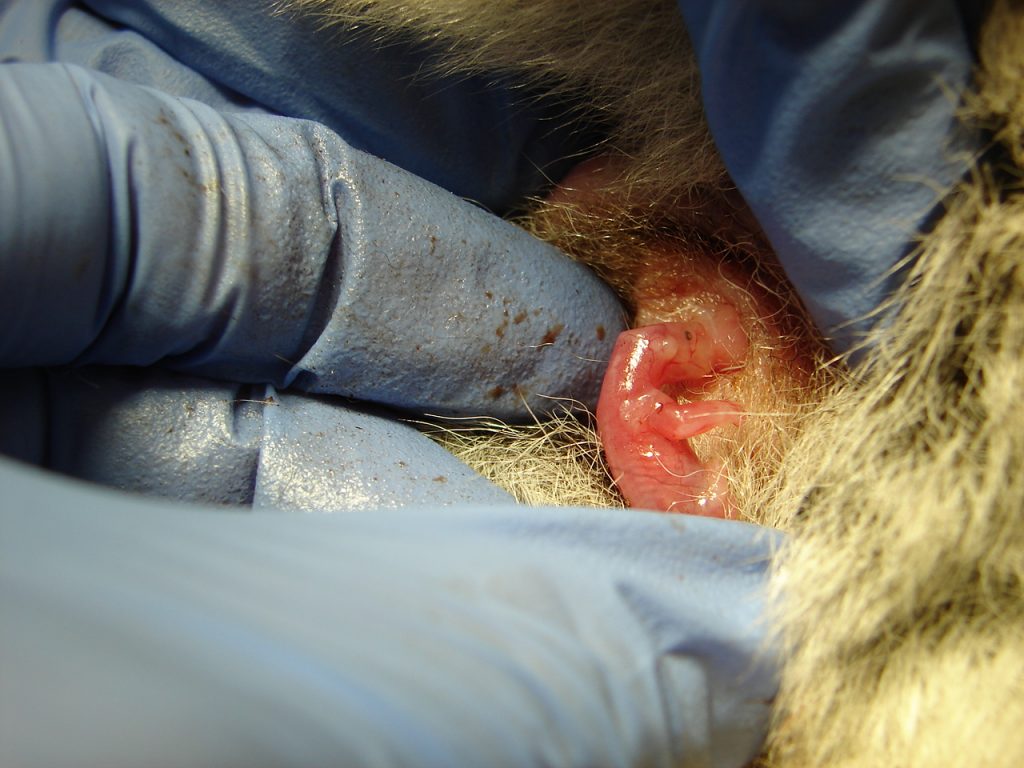
A baby as cute as a jelly bean
Starting small, a baby koala, called a joey, is about the size of a jelly bean when it is born. After birth, it crawls from its mother’s birth canal to her pouch. It feeds on milk from nipples inside the pouch, and the joey stays in its mom’s warm, protective pouch for about the next six months.
Facing threats, past and present
Koalas were once slaughtered for their fur. More than 8 million of them were killed for that reason between 1888 and 1927. Today, their biggest threat—in addition to disease, predation by domestic dogs, drought, and run-ins with cars—is loss and fragmentation of their eucalyptus forest habitat.
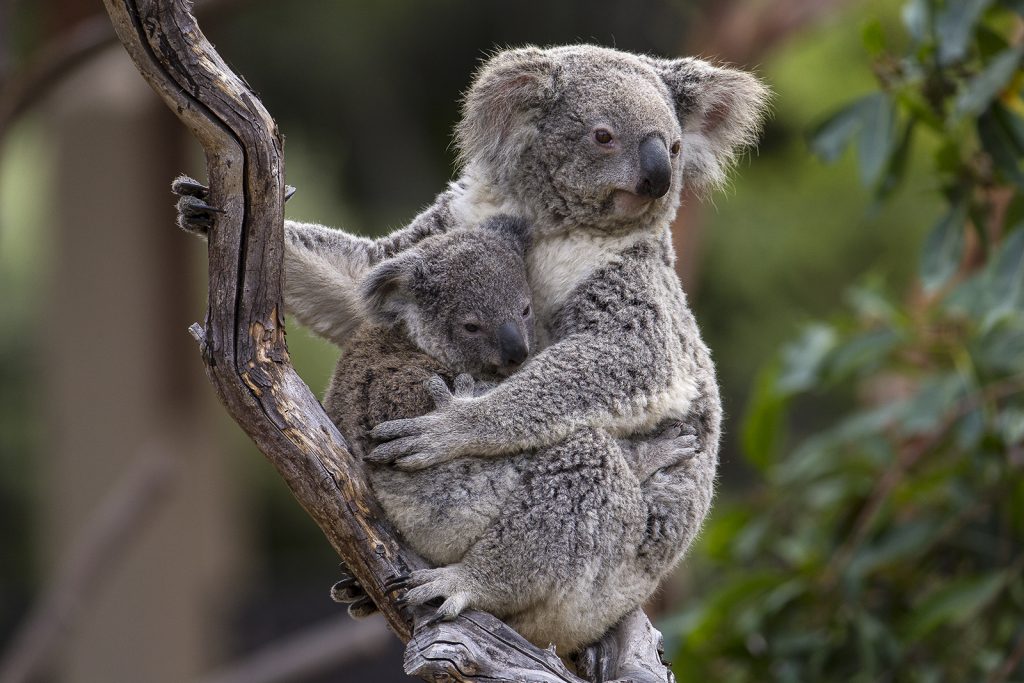
Built for climbing
Koalas spend most of their time high up in eucalyptus trees, eating, lounging, and sleeping (snoozing up to 22 hours a day, in fact). They can climb rapidly and grip tightly onto branches, thanks to hands with ridged pads and two opposable thumbs (not just one, like humans), and feet with a double toe: one with a claw for grooming and one with no claw, for gripping.
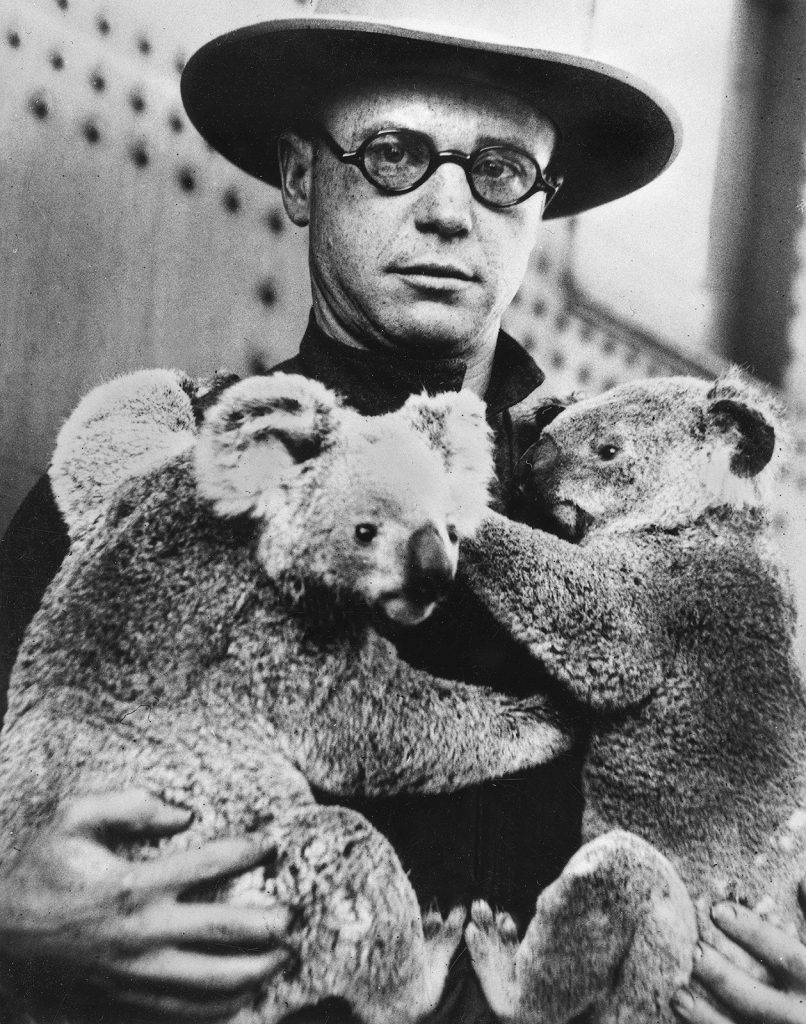
Famous from Australia to San Diego
The San Diego Zoo has had a long history with koalas, and we currently have the largest group of them outside Australia—along with the most successful koala breeding program outside the Land Down Under. The first koalas (named Snugglepot and Cuddlepie) arrived at the San Diego Zoo in 1925, as a gift from the children of Sydney, Australia. The Zoo had its first koala birth (which was also the first in the US) in 1960, and more koalas arrived from Australia in 1976. A large group can now be seen in our Australian Outback area.
Find out more about koalas during keeper talks at the Conrad Prebys Australian Outback at the San Diego Zoo (check the map for times). You can also watch them online anytime on our Koala Cam.
Eston Ellis is a writer and copy editor for San Diego Zoo Global. Read his previous story, Flying Free Again.

